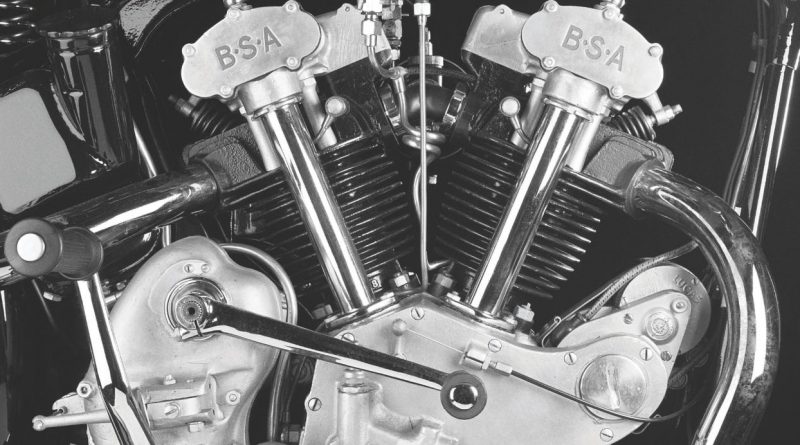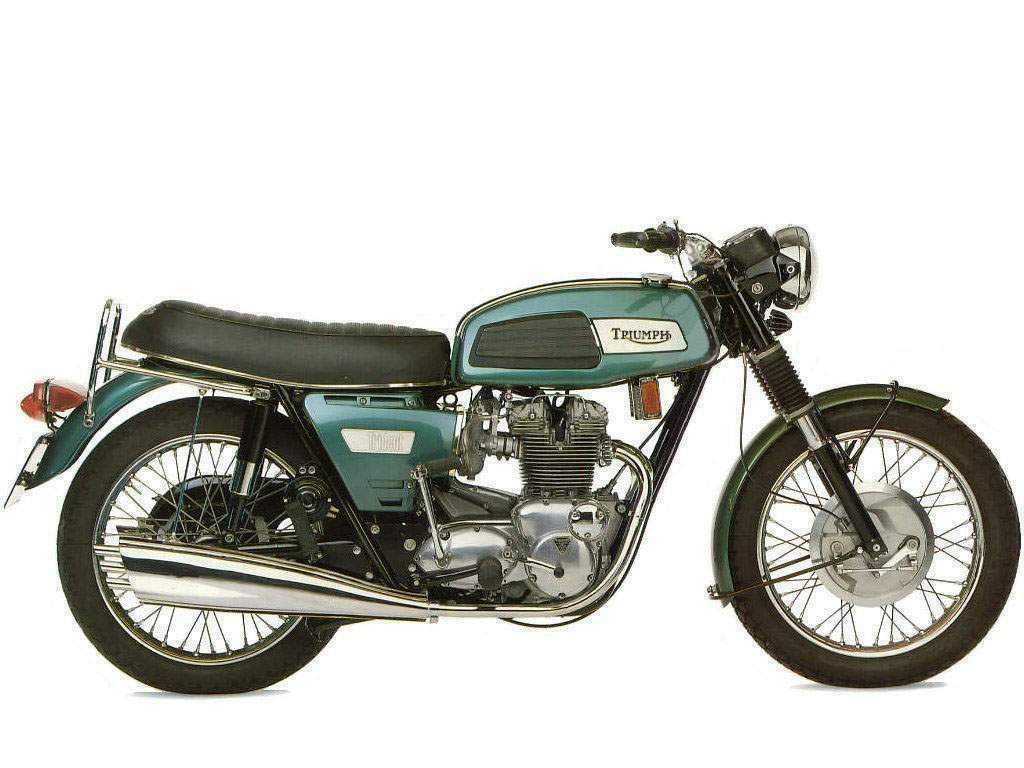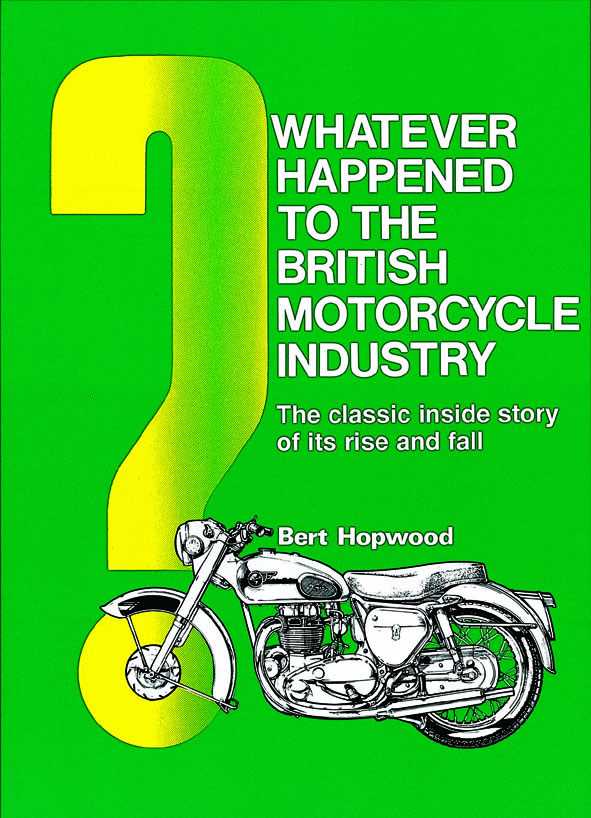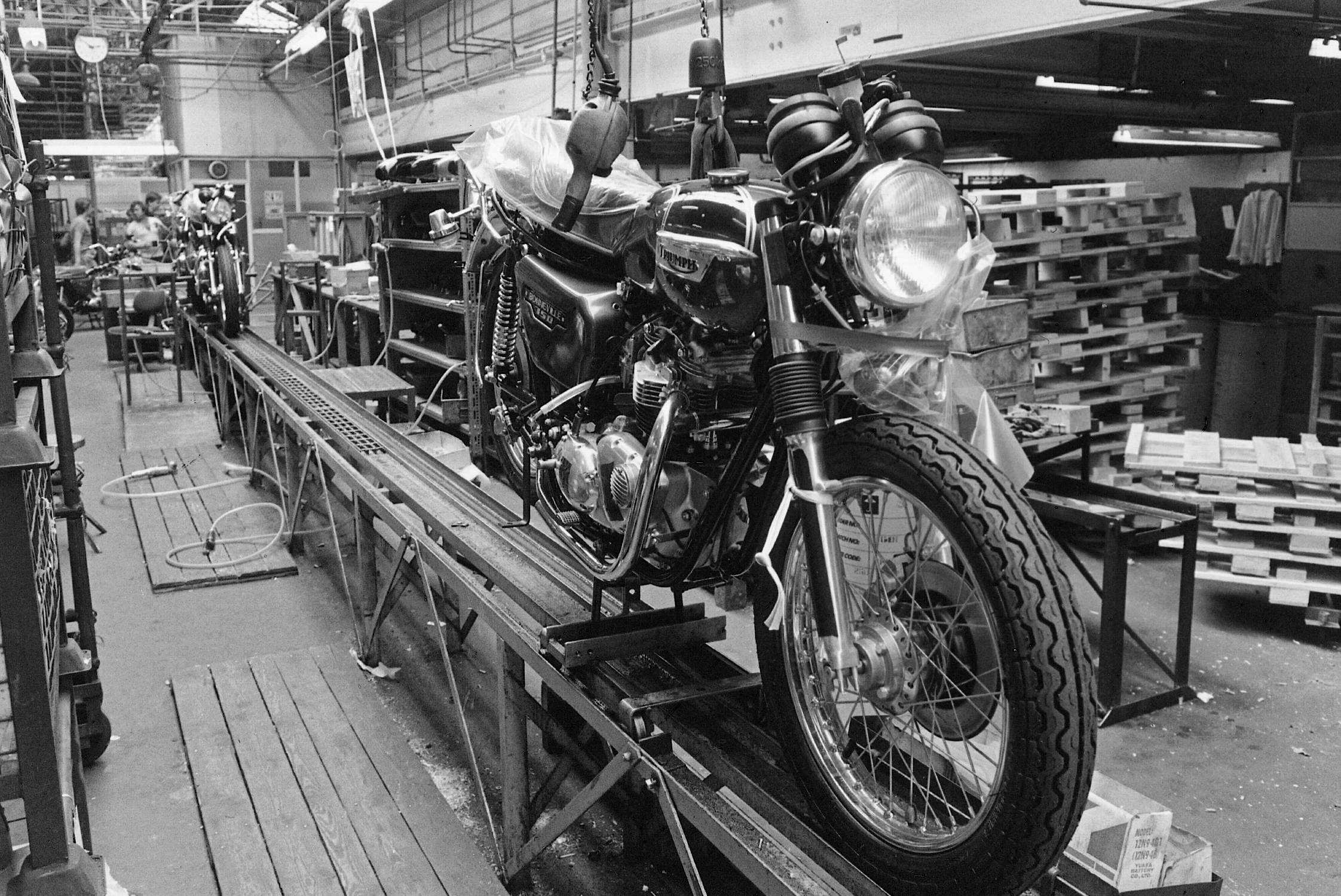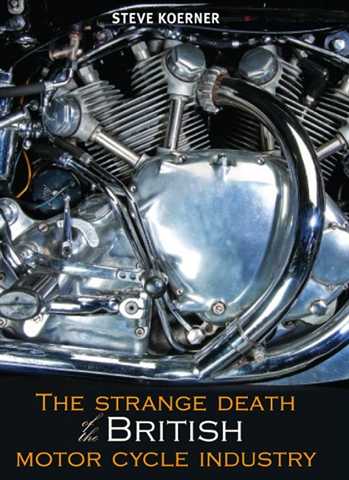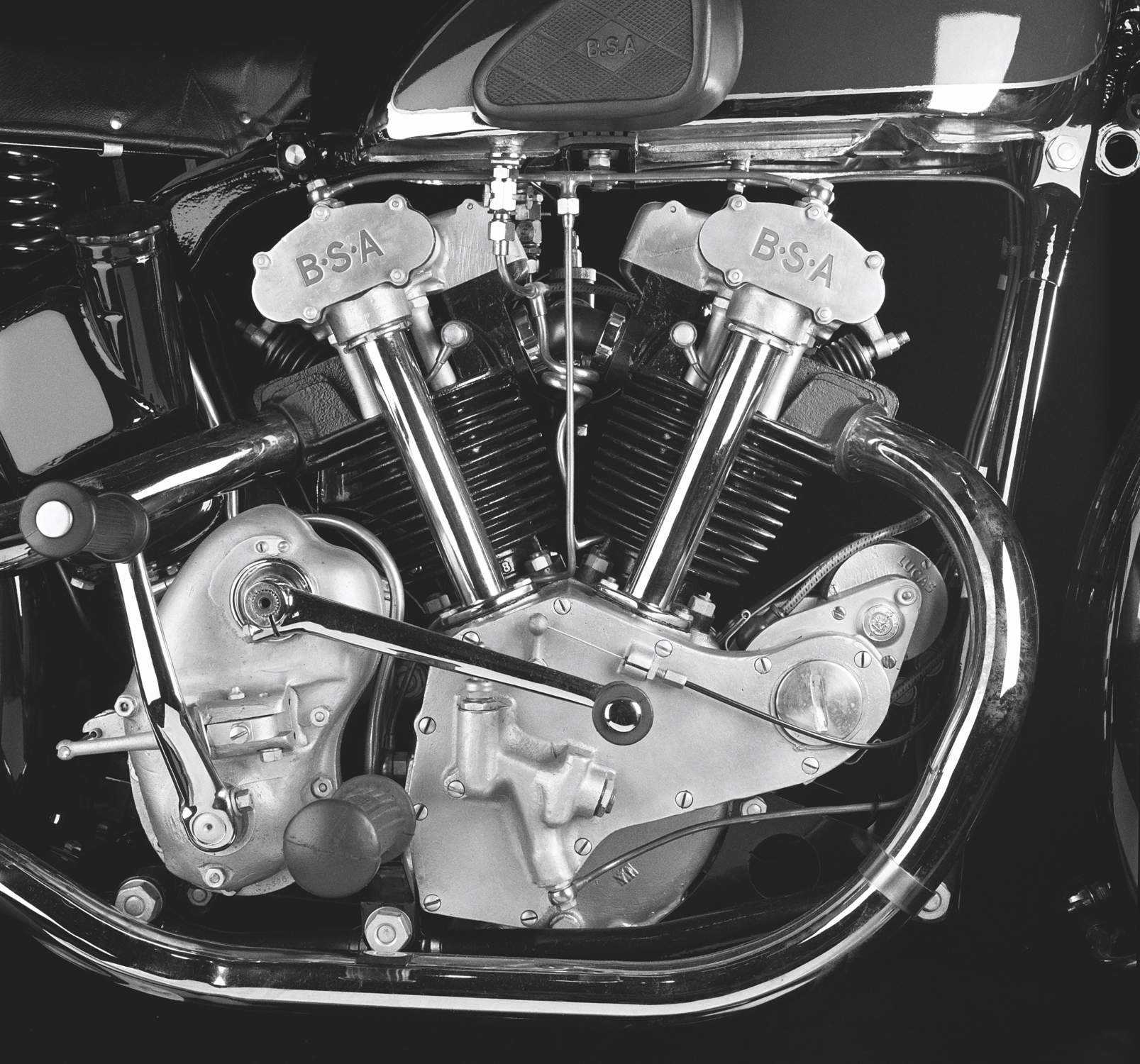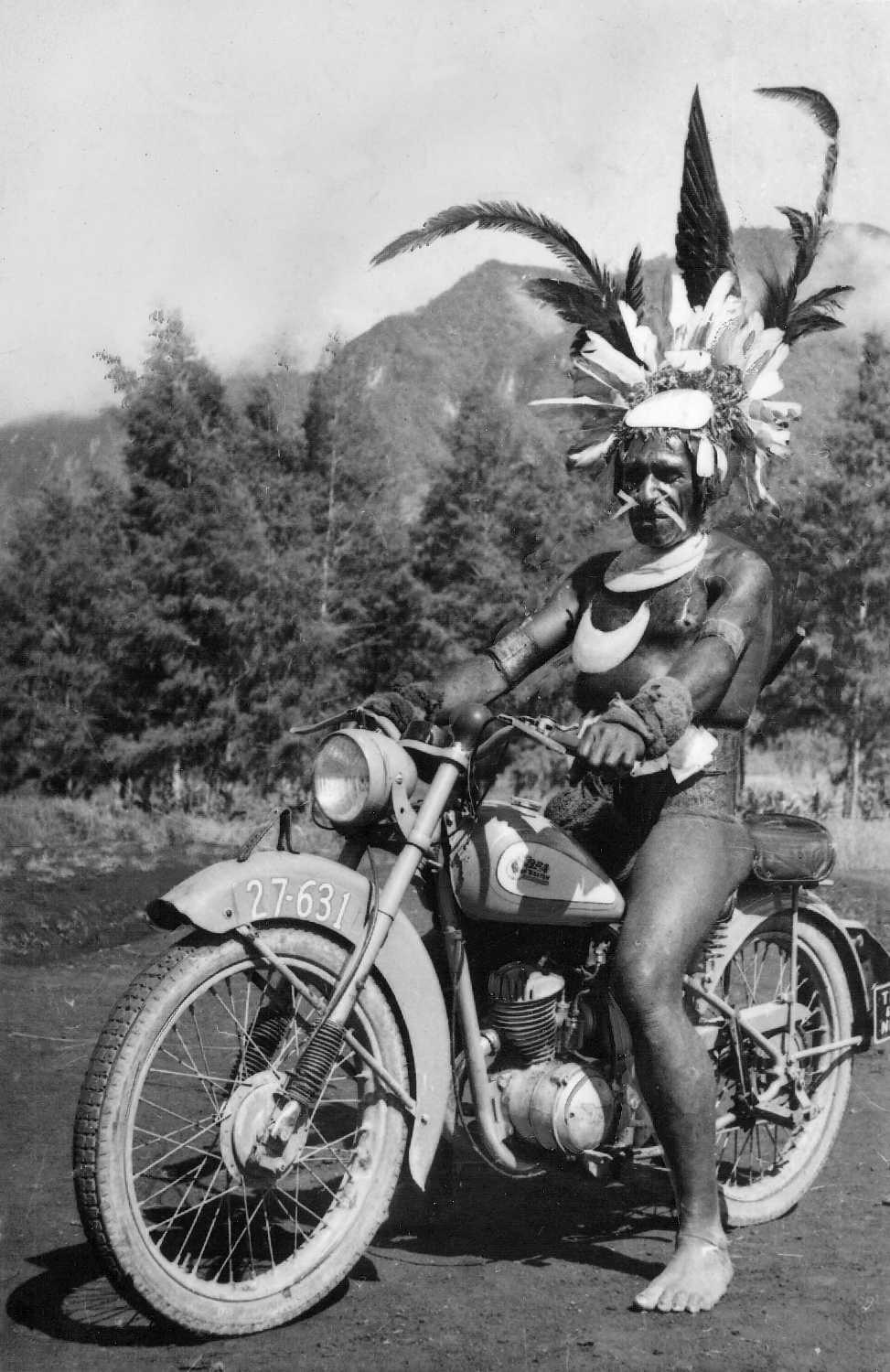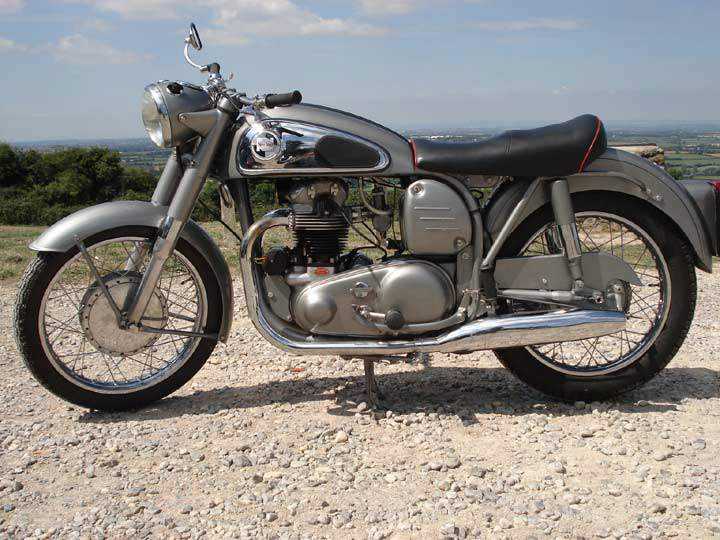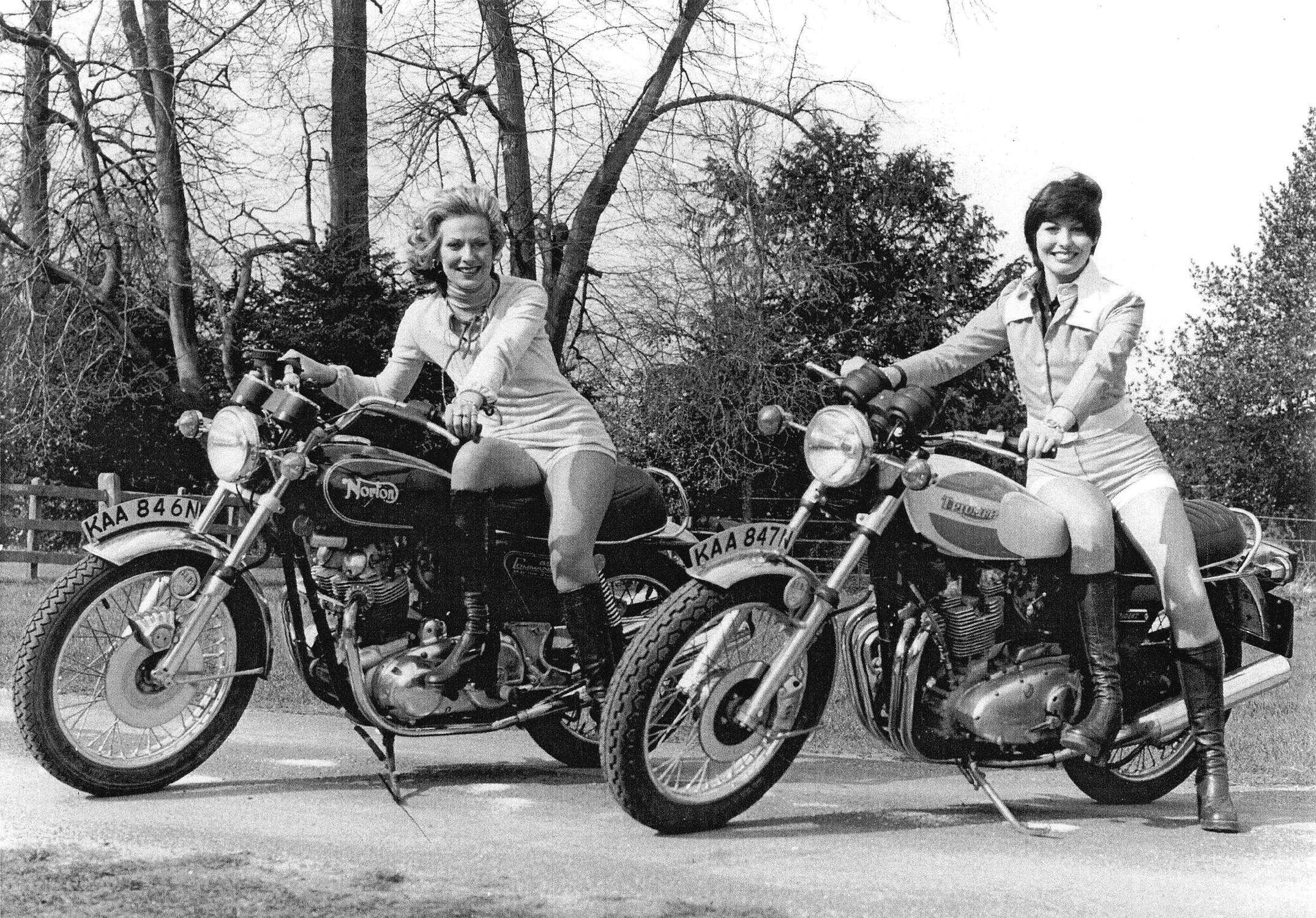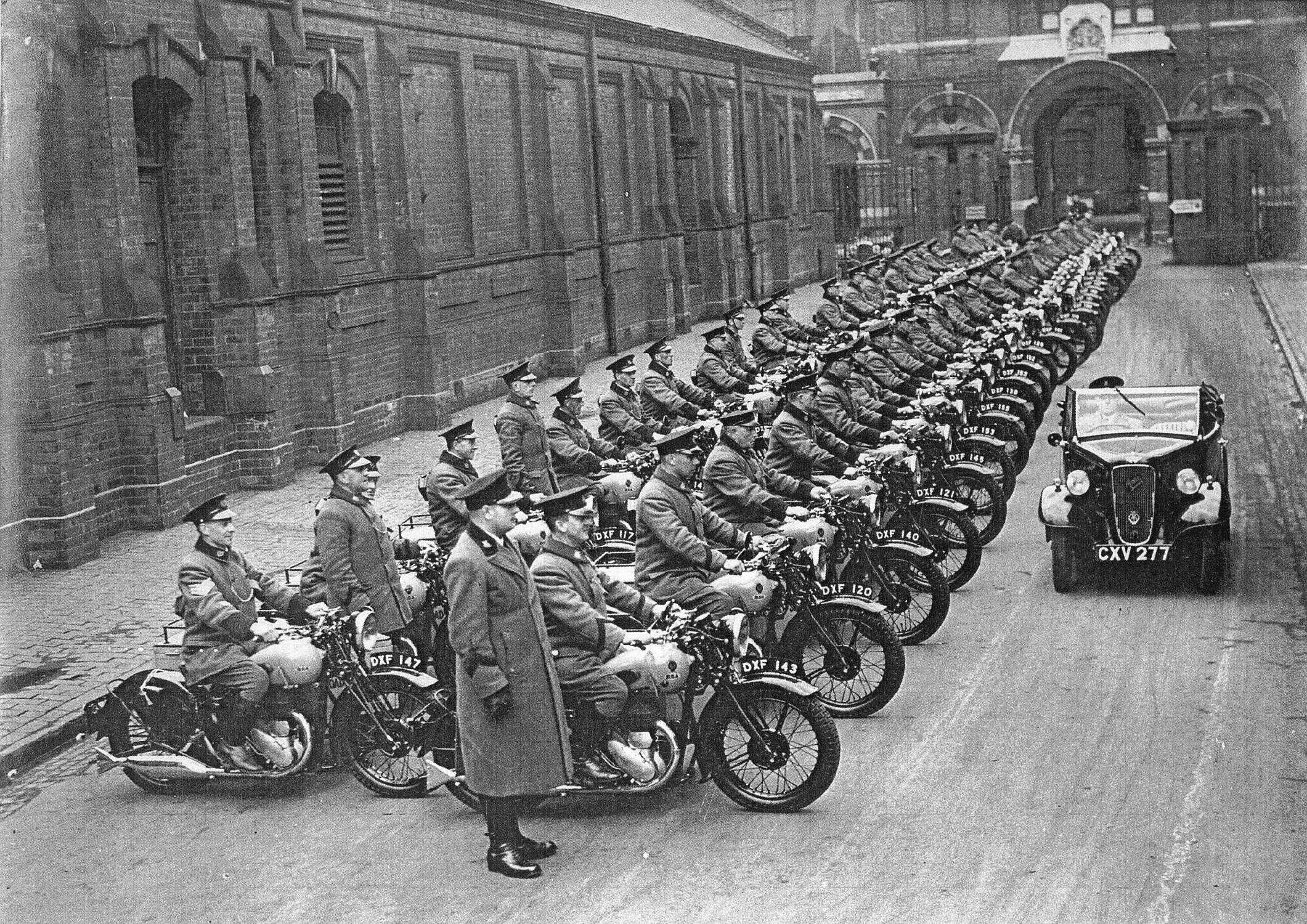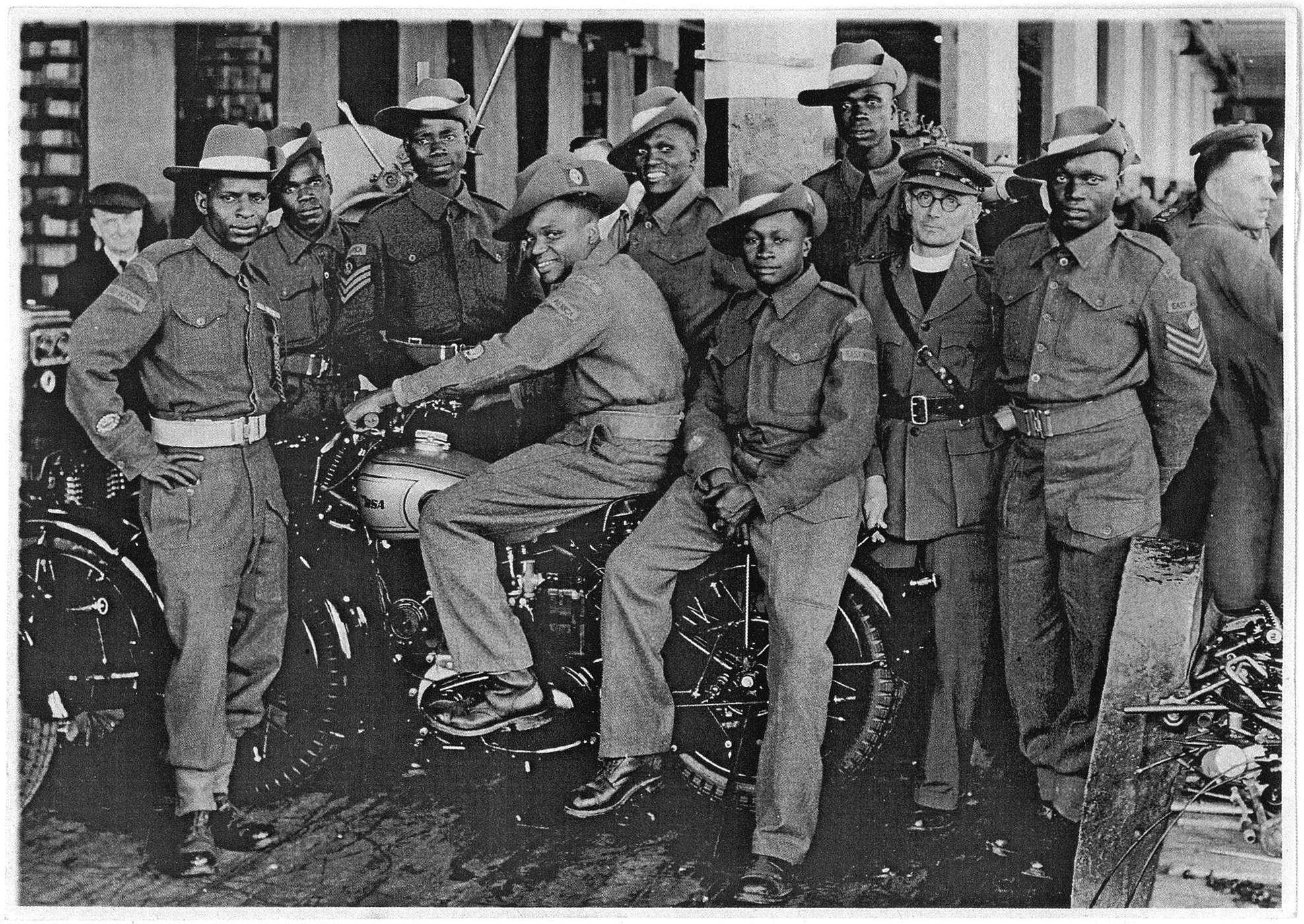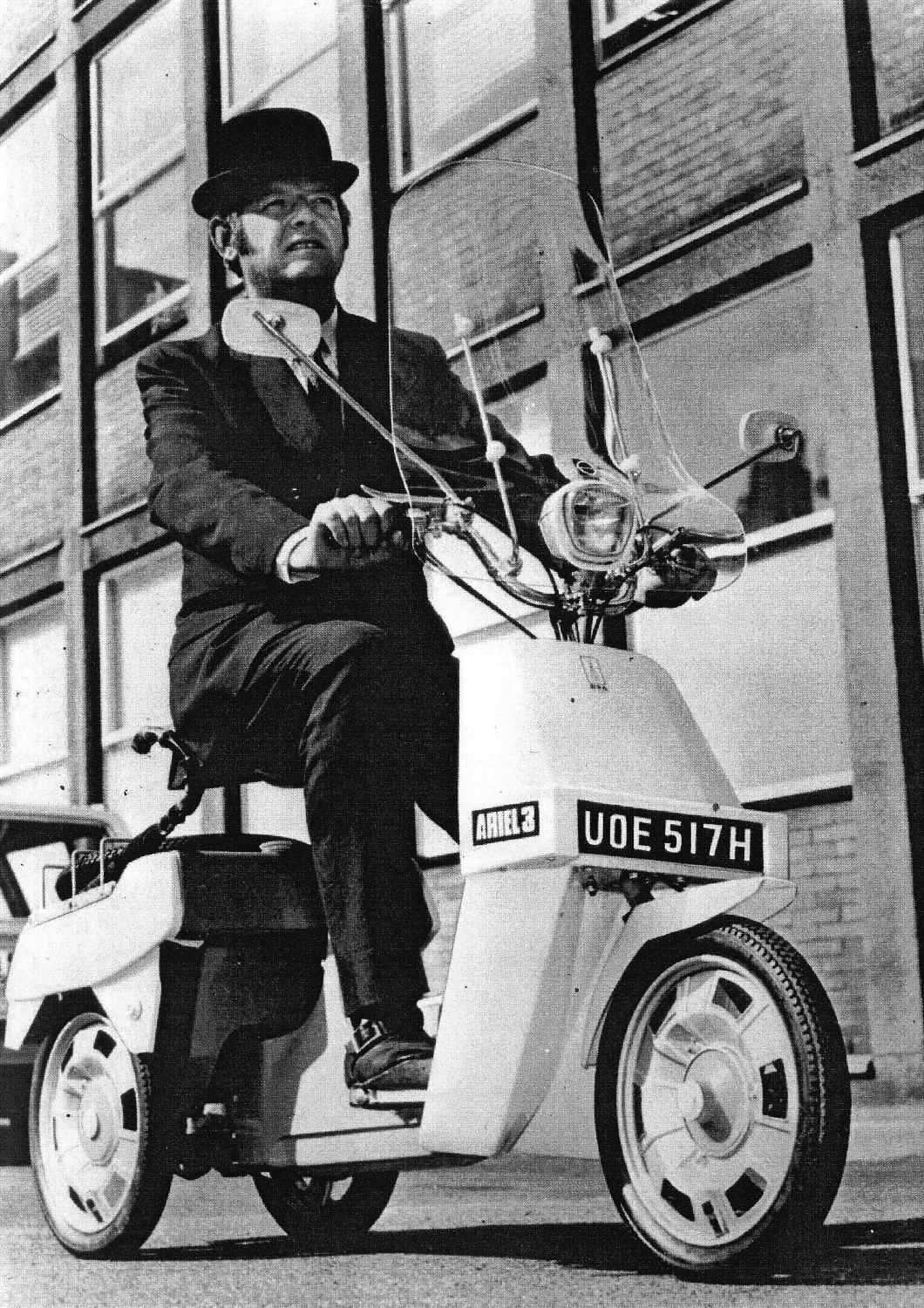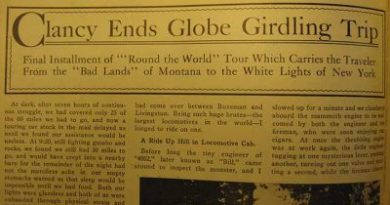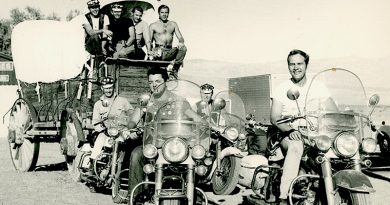Book Review – What did happen to the British motorcycle industry?
British motorcycles – British iron, or Britiron as it is known by many – possesses a legendary, near sacred, status in my country. The craving for Britiron was once so strong here in the US that it was the third largest import from the UK, after automobiles and whisky. Up to 90% of the motorbikes produced by factories in the Midlands wound up in North America (Canada was a strong, if often unmentioned, market).
Tens of thousands of mostly American males worshiped on the shrines of Norton, Triumph and BSA, among many other marques. Bob Dylan and Steve McQueen seemed to be as well-known for their Triumphs as they were as entertainers. For a certain generation, my Bonnie laid not over the ocean, but in my own backyard.
The industry went boom in the 50s; bust in the 60s; and bankrupt in the 70s. That’s quite a dramatic arc in quite a short period. How and why that happened has been subject to much speculation over the years. My bookshelf groans under the weight of too many volumes, covering the subject in some form or another.
There is, of course, Bert Hopwood’s it’s-everyone’s-fault-but-mine tell-all Whatever Happened to the British Motorcycle Industry (1981). Steve Wilson’s Down the Road (2000) devotes an entire section to profiles of people involved with the industry back in the day. The relevant sections of his series, British motor cycles since 1950, could easily be cut and pasted to make another book. The same could be said for the marque history volumes of the amazingly prolific Mick Walker.
In terms of marque histories, Triumph alone has inspired Tales of Triumph Motorcycles by Hughie Hancox (1996), Turner’s Triumphs by Jeff Clew (2000), Save the Triumph Bonneville by John Rosamond (2009), and Travelling with Mr Turner by Nigel C. Winter (2011), among a handful of others. Even such obscure books as Damien Kimberley’s Coventry’s Motorcycle Heritage (2009) have a say.
A bibliography of the number of articles published in vintage and antique motorcycle magazines that touch directly or indirectly on the subject would be a book in itself. And then there are the passing comments in columns and editorials…. TV and DVD have made contributions as well.
If all that effort had been directed into saving the British motorcycle industry, there might be one today. Whether Triumph constitutes a continuation or a resurrection is beyond the scope of this article; regardless, more than half of its manufacturing facilities is overseas.
The basic story is well-known and rounding up the usual suspects easy. There are those who blame management for not doing enough to remain competitive: Lionel Jofeh, Dennis Poore, or Lord Hartley Shawcross, among others. Even Edward Turner and Hopwood have their detractors.
In the 50s and 60s the manufacturers were still producing motorcycles designed in the 30s and 40s, with few, if any, upgrades. The actual assembly lines were equally antique. British motorcycles were virtually handmade. Investment in modern technology was lacking.
Furthermore, the marques did little to expand their markets, focusing on what Turner called the “fashionable young man”, ignoring the potential of cheap reliable two-wheeled personal transportation: a market that first Italian manufacturers and then the Japanese were happy to tap. This “market retreat” meant they companies weren’t making bikes a lot of people wanted to buy and ultimately meant they couldn’t manufacture enough bikes to remain competitive.
There are those who blame government for indifference and interference. Not only did government policy require that the cash-strapped country export most of its motorcycles, but also levied a new purchase tax raising the price of such vehicles domestically.
The government declined to impose import quotas on bikes from abroad (unlike say Italy, some of whose marques – Ducati, Moto Guzzi, MV Agusta – still survive), though the evidence that Japan flooded the market is scant (the new purchase price still applied).
There are those who blame the unions for resisting firings and wage cuts, despite the fact it was the workers who managed to keep Triumph going as a co-op.
There are those who blame the post-war return to affluence, making cars affordable on the one hand, and factory jobs unappealing on the other. (It was while reading that last one that I realized I need some of that imported whisky. That’s right, boys and girls, keep everyone too poor to ride anything but motorcycles, never mind imagining better lives for themselves or their children.)
And then there are those who blame the negative image of motorcyclists and motorcycling created by the Rockers – the very “fashionable young men” that Turner liked to target. It made it easy to ignore the industry when more pressing matters – an Arab oil embargo, say – were drawing the attention of the government.

Given the degree of interest in the topic and the richness of the material, it’s odd that other than Hopwood’s polemic, there have been no major studies published until recently: Steve Koerner’s The Strange Death of the British Motorcycle Industry (2012) and Abe Aamidor’s Shooting Star (2009).
Both writers have strong Canadian roots, though Koerner has one foot in Britain, while Aamidor has one in the US. Both writers are photographed astride a motorcycle and the respective bios identify what they ride: Koerner favors a 1974 Norton Commando, while Aamidor’s favorite is a Velocette Venom Thruxton. (For the record, I ride the Lexington Avenue Local.)
All three rides are irrelevant. Japan’s Motorcycle Wars (2009), one of the better books about the history of the motorcycle industry, was written by non-rider Jeffrey W. Alexander. What is key here is research and analysis. The first book takes a serious, academic approach; the second, a breezy, journalistic one. Each in its own way outlines a tale of missed opportunities by an industry that was fundamentally flawed.
Koerner’s book is based on his PhD dissertation. Parts of it have appeared in such places as The Classic Motor Cycle and The International Journal of Motorcycle Studies (IJMS), to which he is a regular contributor. The IJMS is a web-based publication dedicated to examining motorcycles and popular culture. His articles there include the intriguing Whatever happened to the girl on the motorbike: British women and motorcycling, 1919 to 1939 (March 2007), a spot-on book review of Travelling with Mr Turner (Fall 2011), and a scathing review of Aamidor’s history of the demise of the British motorcycle industry (Spring 2010). Not that Aamidor’s contribution to the literature makes it to Koerner’s nine-page bibliography, but then again it is titled “Select Bibliography”.
Strange Death of the British Motorcycle Industry is an academic work and as such presents an argument as well as history. It’s his analysis of what went wrong for the British motorcycle industry. Koerner argues that the elements that lead to the post World War II collapse of the industry were in place and were already destructive before the war as well. He writes, “This book will argue that the collapse of the British motor cycle industry had far more to do with internal weaknesses and, more specifically, the consequences of the production strategy adopted during the inter-war years than it did with later, foreign competition” (p.5). Koerner, incidentally, prefers the spelling “motor cycle” because that was the most common during the bulk of the period under scrutiny.
To explore his thesis, he goes back a decade more than Barbara Smith did in her masterful The British Motorcycle Industry, 1945 to 1975 (1983). He examines the increasing focus on high performance vehicles for enthusiasts over a more utilitarian commuter or consumer motorcycle; the research, development, and investment in new designs or manufacturing facilities; and blaming the public for not buying what the manufactures wanted to sell and the government for not giving them the tax breaks and protectionist legislation they felt they deserved.
This self-limiting approach, to use Koerner’s term (or to be more accurate self-defeating approach ), make British motorcycles non-competitive in the marketplace against German machines before World War II and against first Italian, then Japanese machines after the War.
While discussing in depth such issues as the resistance to standardization and modernization that would make British motorcycles and their production more reliable, the key for Koerner is the failure of the industry to develop the ‘everyman’ motorcycle, a safe, easy to use utility bike. The focus on sporting machines for fashionable young men with racing pretensions, he feels, was wrong.
Long before Japan came into the picture, Italy was satisfying this growing market with such scooters as the iconic Vespa. Germany, despite post war restrictions, also developed low displacement, easy to maintain bikes. Indeed, the closest Britain came to the utility bike was the Bantam, which BSA picked up through Reparations (it had been a 125 cc DWK) and more or less froze in aspic. Nevertheless it was the single most successful British motorcycle of all time, enjoying more than twenty years of popularity. The Bantam is still desirable some forty years after it ceased production.
Or as Peter Henshaw writes in The Essential Collector’s Guide: BSA Bantam all Models 1948 to 1971 (2008): “It was a tough little bird, suffering the first wobbly learning curves of those thousands of riders, not to mention the attention of 16-year-old GPO telegram boys, for whom the Bantam was standard issue. Older riders used the Bantam to get to work on, and for them it was a tool, not something on which to lavish care and attention. So it says much for the basic soundness of the design that so many Bantams have survived.”
Despite the popularity of Vespas and Bantams, the industry opted for fast bikes and the negative publicity they generated, from Rockers to high accident rates. Nor did it improve the basic designs of the motorcycles it produced, despite feedback. Complaints about reliability of the bikes, of delivery, of paperwork, went unheeded. In contrast, when the Japanese manufacturers discovered that because bikers in the United States rode motorcycles harder and longer than Japanese bikers and the motorcycles were breaking down, the manufacturers went back and retooled the motorcycles to withstand the different use.
The Japanese motorcycle industry was built on utility bikes, growing from 7,500 in 1950 to 1.5 million in 1960, when the Japanese motorcycle exploded into the international scene. Unlike the British (and to a lesser extent the Italians) Honda and the rest of the Big Four went after untapped markets that weren’t interested in fast bikes.
The book itself is handsomely produced and lavishly illustrated. The photographs – personal as well as archival – are well selected and not common. I don’t know what possessed Koerner to include a picture of a New Guinea tribal chief astride a BSA Bantam, but I’m glad he did. He keeps the language direct and appropriate for general audiences, only rarely hitting such academic-speak clunkers as “Triumph commenced motor car manufacture” (p.16).
Sidebars highlighting specific people – not just Turner or John Sangster, but also such lesser known figures as Henry Watling or Valentine Page – or important marques or models – the gamut runs from the Bantam to the Vincent Black Shadow – or special topics – the history of Meriden or the Velocette LE – provide background without disrupting the narrative.
The more than 60 pages of footnotes hide some gems of trivia among the citations and amplifications. Koerner points out that there were a large number of Masons involved in the early days of the British motorcycle industry. He also cannot resist mentioning that BSA declined to manufacture the Volkswagen Beetle, one of the big automotive successes of the period. Instead it stuck to Daimler, which helped bankrupt the company.
Koerner’s depth and breadth of research and analysis make Strange Death worth reading, even if his depiction of an industry in denial, willfully destroying itself is a bit depressing. It’s highly recommended for those who are seriously interested in the subject.
Shooting Star itself is a slim volume ostensibly focused on BSA’s post World War II rise and fall. Slim is putting it mildly. At 150 pages with wide margins and a larger type point, it feels and reads more like 100 pages. The photographs are not interesting and the captions redundant, not only telling the reader little more than can be seen in the picture, but also to each other.
Two captions on the bottom of the third page of photographs are all but the same. Both are company shots of Turner and Bill Johnson. Neither is needed to illustrate Aamidor’s take on the industry. One “because it ought to be there” would be enough. That the second has no new information should have been a clue that it was unnecessary.
His style is breezy and journalistic, which makes it a quick read, much in the same sense a feature article in a Sunday supplement is a quick read. Indeed, one of Aamidor’s other books is Real Feature Writing (2006), a college text book for journalism students.
It is also typical of Sunday supplement features, not that well researched by academic standards. There is a tabloid-like focus on trying to bring personalities to life (in some cases quite successfully) over any sort of deep analysis. A handful of new sources gives the book the illusion of in-depth research and saves it from being virtually a write-around.
A shallow book can be a useful introduction to a subject. Let’s be blunt: not everyone wants to plough through Koerner’s sometimes numbing series of charts and tables. Unfortunately, Aamidor goes off in three directions at once, making it useless as such an introduction.
Essentially, the three directions are: a history of the fall of the British motorcycle industry in general and BSA in particular as reflected in the people who he feels are the most responsible or significant; an attempt at an elegiac essay about the last British motorcycle racers who raced on British motorcycles; and a parade of his shiny new, never seen before, sources. The first two might have been combined to good effect; the third undoes him.
In terms of the actual history, Aamidor takes a pro-British, pro-management, anti-union, anti-Japanese point of view, but within that, is more than accurate enough. His heart and soul may lie with Britiron, but that doesn’t stop him from noting “Honda succeeded… because it made a superior product that people found irresistible” (p.91). He’s skeptical about both Turner and Hopwood, though through Aamidor’s lens Turner comes off as a sort of proto-Steve Jobs, better at concept and marketing than design and engineering. Aamidor even points out that such secondary market developments at the “Triton” or the Rickman Metisse were not seen as progress by BSA and the other manufacturers, but as threats to the way things were always done.
The book comes to life with the sections about the end of British racing, which for him means born racers borne on British racers. Beginning with a wonderful and well told tale of Jeff Smith’s first race – Smith was too young to enter legally – through Geoff Duke’s confrontation with the racing establishment, to Turner letting John Surtees go because “racing was not needed” despite the reputation of British motorcycles being established on the track, Aamidor provides an unusual perspective on the downfall of the British motorcycle industry. Little wonder then that Aamidor’s other textbook is Real Sports Reporting (2003).
While it could be argued that the first is needed to put the second into context, the threads could have been tied together better. The new sources, however, are more laid on top than tied in.
Aamidor’s two new sources are Joe Heaton’s unpublished PhD dissertation about BSA’s fall and Tony Benn’s notes and documents released by the “30-year rule” that allegedly prove a secret plan to nationalize British industries. Heaton’s paper is more significant than Benn’s papers.
Heaton’s contribution, writes Aamidor, is analyzing the implications of “tax laws [that] rewarded companies for holding on to old capital investments and punished them for making new capital investments”. Aamidor doesn’t go beyond that, either to the larger story of how that helped segment retreat and industrial inertia or even the irony that management was right about tax laws working against them, they just were focused on the wrong tax laws.
As for Benn, the plan wasn’t exactly secret at the time, nor was using the motorcycle industry as a test case a hidden agenda. Aamidor himself quotes Private Eye’s sally about “Benn and the Art of Motorcycle Maintenance”, editorializing with, “after a popular book title of the day” (p.129). Zen and the Art of Motorcycle Maintenance has sold between five and six million copies, which would seem to suggest it is still a popular book title, whatever one may think of the contents.
What we have with the Benn papers is what might be best described as the Wikileaks syndrome. Something that sounds like it’s going to have great revelations based on the level of secrecy, but upon simple scrutiny add detail, perhaps nuance, and little else. There were no surprises to anyone who had been reading The Guardian or The New York Times on a regular basis. The level of the noise exceeds the quality of the content.
More disturbing is Aamidor’s attitude to various social, racial and religious minorities. Describing the people who built the motorcycles as “felt caps on heads and tin lunchpails under their arms” might pass muster in some quarters as not being condescending, but referring to Japan as “the Orient” (p.88; p.110) will not. It’s not even accurate. Aamidor doesn’t mean Asia, he means Japan. The rest of Asia, or “the Orient”, is irrelevant.
At least he’s consistent there. A lively selection of excesses of Sir Bernard and Lady Norah Docker is marred by Aamidor’s pedantic aside about Sir Bernard often being called bender, which is translated as a homosexual in British slang. Aamidor provides no such aside about T.E. Lawrence, who was not only gay, but also a sexual masochist.
What we have in the end is a book that favors caricatures over chronology, anecdotes over analysis. The book I would have liked to have read would have been entirely about racing and the British motorcycle industry.
Among those of us who study popular culture there is a saying that there are three types of historians: the anecdotist; the chronologist; and the true historian. The anecdotist can relate all sorts of fun moments and incidents from history, but has no sense of sequence or political context. The chronologist has a sense of sequence, what came first, what followed, what happened next, and can sometimes tell a good anecdote, but also lacks a sense of context. The true historian has a sense of context, how history works or came about, and presents an argument to present that theory.
Aamidor is an anecdotist; Koerner, a true historian.
Jonathan Boorstein


